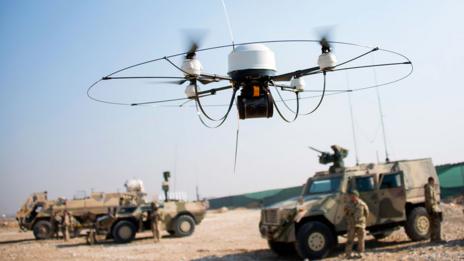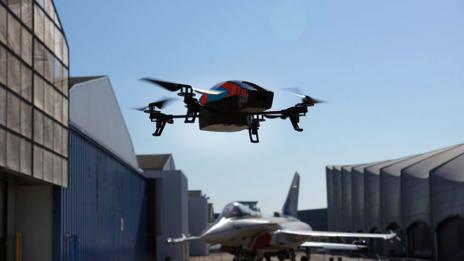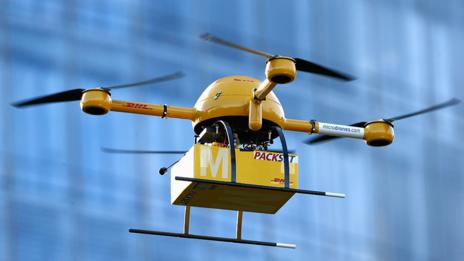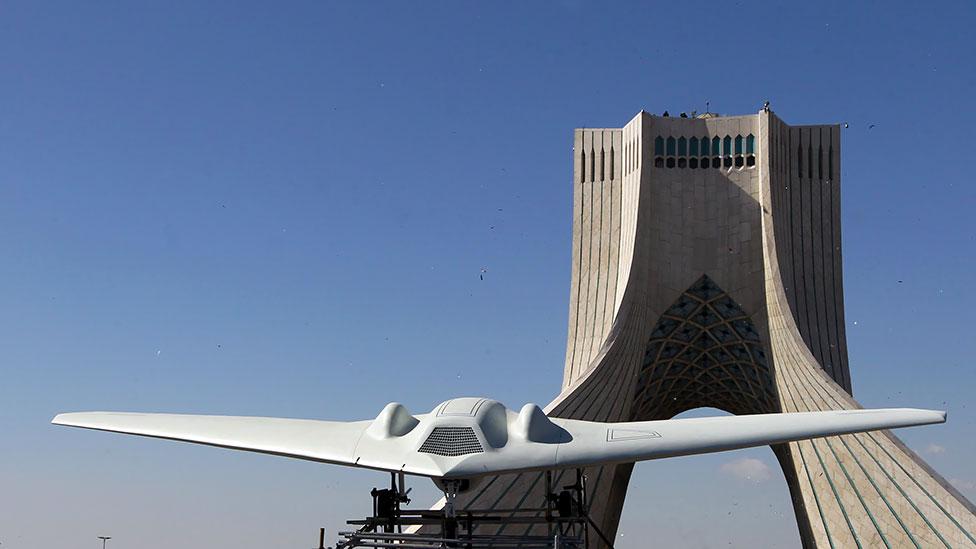By COHA
By W. Alejandro Sanchez
Over the past several years, drone usage has become increasingly widespread, not solely among global military powers but also among rising mid-level military powerhouses and even among less-economically developed nations. The combination of increasingly inexpensive drones and the intention by countries that manufacture them to sell this technology to friendly governments are two critical factors that are fomenting drone usage across the globe.
In recent years, the Council on Hemispheric Affairs has issued a number of reports about drone usage in Latin America. This analysis aims to highlight the main aspects of this intriguing piece of military technology.
1. The U.S. is not the major provider
Even though the U.S. continues to be the largest supplier of conventional weapons to Latin American states, it is Israel, more so than Washington, which has become the foremost provider of drone technology. In US News Jason Koebler explains: “So far, the market for drones in Central and South America has been completely dominated by Israeli companies such as Elbit Systems — which has sold its Hermes drones to Colombia — and Israel Aerospace Industries [IAI] — which has sold drones to Ecuador and Brazil.”[1]
Israel sold some $500 million worth of drone technology to Latin American clients between 2005 and 2012. While this may not sound like a huge stream of sales as compared to other weapons deals (a December 2013 deal between Brazil and the Swedish company Saab for 36 Gripen warplanes is estimated at $4.5 billion), such transactions are bound to increase in volume in the near future so long as Latin American states continue to enjoy a strong economy and regional armed forces see drones as an advantageous weapon.[2]
For the immediate future, it is likely that Israel will continue to be the prime beneficiary of a steady flow of drone sales to Latin America. Apart from, consummated sales of UAV (unmanned aerial vehicle) technology to Brazil and Mexico, other nations are considering purchasing Israeli drones. For example, Guatemalan President Otto Perez has expressed his interest in IAI drones to combat drug trafficking across the border between Guatemala and Mexico. [3] Likewise, there have been reports that the Chilean Navy may have switched its interest in purchasing Boeing’s Scaneagle drones to Elbit’s Hermes 900.[4]
As for why the U.S. lags behind Israel on the drone market, Koebler explains: “American companies hoping to sell drones overseas need special permission from the State Department before they can begin selling drones to foreign companies.”[5] Moreover, it is not just about bureaucratic red tape that prevents these transactions as “not all the big American defense contractors are ready to try selling unmanned aerial vehicles to countries in Latin America.”[6] Koebler indicates that the North Carolina-based UTC Aerospace Systems, which produces the Vireo drone, as the main company that is trying to sell drones to Latin American clients.
This is not to say that American-made drones are not already being operated by Latin American governments and their security forces. Specifically, Mexico and Colombia are currently using such military technology. Regarding Bogota, the Americas Society/Council of the Americas explains that “this Andean country has reportedly been using U.S.-made drones since 2006 to fight drug trafficking, track guerrillas, and assist in hostage rescue efforts.” Namely, Bogota employs the ScanEagle, produced by Boeing.[7] As for Mexico, the U.S. has been flying drones such as the Predator and GlobalHawk over Mexican airspace to provide surveillance information to help crack down on drug trafficking and other criminal activities across the U.S.-Mexico border.[8] (It is worth noting that both Colombia and Mexico have also reportedly bought Israeli drones.)[9]
As for other nations, there have been reports over the past years that countries like Russia, China and even Iran are collaborating with certain Latin American nations so that they can develop their own drone technology. Nevertheless, exact details about the specifications of these UAVs are still unclear. For example, in March 2012, then-Southern Command chief General Douglas Fraser explained to reporters that Iran was expanding its influence to Latin America by helping Venezuela, a regional ally, to build drones.[10] Months later, in June 2012, the late Venezuelan leader Hugo Chavez declared that, with Russian aid, his nation had succeeded in building its own drones. This past May 2013 there were reports that Venezuela had launched drones to combat drug trafficking, though interestingly they were reportedly built with Iranian help, not Russian. [11]
Finally, it should be noted that other nations and companies are trying to gain a beachhead in the Latin American drone market. For example, according to the Spanish defense news agency Infodefensa.com, Bolivia’s two drones are the South Korean model Ucon System Remoeye-006.[12] Moreover, the Uruguayan army is currently evaluating two different types of UAVs: the Discoverer and Discoverer II, produced by the Swedish company Unmanned Systems Groups.[13]
2. The Geopolitical Factor
Up to this point the discussion has involved the sale of drones, or providing drone technology, to interested Latin American states. These considerations highlight an important factor of the Latin American drone-craze. A quick overview of drone sales highlights how alliances and good diplomatic relations between nations determine which vendors will sell drones to which client-states. For example, the U.S. has provided billions of dollars to Colombia and Mexico over the years, via a variety of bilateral initiatives such as Plan Colombia and the Merida Initiative; hence it makes sense that Washington is willing to give Bogota and Mexico City access to UAVs. Similarly, Israel has sold Colombia weapons in the past, such as Kfir warplanes; hence Jerusalem is likely to sell Bogota drones as well.[14]
Meanwhile, Venezuela, particularly during the lengthy Chavez presidency, enjoyed strong ties with countries like Russia and Iran. In fact, Venezuela has spent billions of oil-dollars in Russian technology over the past decade; hence it comes as no surprise that Moscow is willing to aid Caracas to fabricate its own drones.[15]
The issue of alliances and geopolitical interests regarding drones in Latin America was perhaps best exemplified in 2011, when the Israeli government prohibited Brazil from selling drone technology that Brasilia had acquired from Israeli Aerospace Industries, to Bolivia and Venezuela.[16] The reason for Jerusalem’s decision is not surprising. Venezuela, during the Chavez regime in particular, was a close supporter of the cause of the Palestinian people. Moreover, both Bolivia and Venezuela have forged close relations with Iran.[17] Hence, it is in the Israeli government’s interest to be assured that its drone technology is not shared with governments that have close relations with Israel’s foes.
3. Native Drone initiatives
An important issue that should be stressed is that Latin America is not solely purchasing drones from military powers like Israel or the U.S. Some Latin American countries are also trying to learn how to manufacture them domestically.
A few of the numerous domestic drone programs in Latin America will be enumerated here. For example, the Peruvian air force is fabricating three types of drones: one prototype has been labeled Pegasus, another is called Quinde (the Quechua name for humming bird) and another has so far not been named.[18] Similarly, Ecuador’s air force has two drone prototypes named UAV-1 Phoenix and UAV-2 Hawk. A March 2013 article in the magazine Diálogo (published by U.S. Southern Command) explains that both models are expected to be operational for reconnaissance and surveillance operations over Ecuador’s airspace in 2014.[19] Likewise, Argentina’s army has built a drone prototype called UAV Lipan.[20]
Additionally, Brazil’s premier aircraft manufacturer, Embraer, is also trying to make a name for itself in the drone market. An April 2013 article by the news agency Agence-France Presse explains that Embraer’s “web of drones, radars, sensors and communication systems – is in the experimental stage. It is deployed 650 kilometers (400 miles) along the border of Mato Grosso do Sul state with Paraguay and Bolivia.”[21] Some analysts expect to see Embraer in the near future as a supplier of drones to other Latin American nations, akin to the company’s already significant presence as a producer of Tucano and Super Tucano military aircraft.
Finally, it should be mentioned that the considerable sentiment in favor of building drones throughout the region, instead of buying them from non-Latin American military industries, could foment greater international cooperation between different state agencies. For example, in 2012, the ministries of foreign affairs of Argentina and Brazil signed a cooperation agreement to jointly research and develop drones.[22] Nevertheless, COHA has been unable to find new information on this agreement, namely whether the bi-national prototype is actually being manufactured or if these intentions did not go farther than a document.
4. A Drone Discussion in Latin America
In the Western Hemisphere, apart from the U.S. and Canada, the only other country that has passed legislation to provide guidelines regarding the use of drones is Brazil.[23] This shows the lack of a badly needed regional debate about the present and future of drone usage both for military and civilian operations. What should be the limits to drone usage? And what should be the limits on what kind of drones can be built? Should Latin America attempt to construct armed drones in the future or should a ban on armed drones be implemented?
One exception was a mid-November 2013 event at the headquarters of the Organization of American States (OAS) on drone usage in Latin America, which was organized by the Inter-American Commission on Human Rights (IACHR).[24] Journalist Diego Cupolo explains that the event was an opportunity for human rights advocates to examine the implications of unregulated drone use in Latin America and to call for guidelines and boundaries on drone usage.
This is not to say that drones are not being openly exhibited in Latin America for military officers, government officials and the public in general to observe. For example, the 2013 SITDEF, a weapons exhibition that took place in Peru, had drones as one of its exhibits.[25] But what is lacking is a discussion regarding drone usage, potentials and limitations, to educate policymakers and the public alike. Up to now, there does not seem to have been a conference on drones in Latin American states similar to the one that was organized by the IACHR and which took place at the OAS in downtown Washington DC.
To look at the situation another way, there is a plethora of literature in English about the usage by the American military and intelligence services of drones in the so-called War on Terrorism. For example, the International Human Rights and Conflict Resolution Clinic of Stanford Law School and the Global Justice Clinic at New York University School of Law have published a comprehensive analysis of the operations and repercussions of drone technology entitled Living Under Drones: Death, Injury and Trauma to Civilians from US Drone Practices in Pakistan.[26] Moreover, there are several scholars on drones in the U.S., most prominently Peter W. Singer – a renowned scholar and director of the Center for 21st Century Security and Intelligence at the Brookings Institution.[27]
Latin American news services regularly publish updates on drones purchases and other initiatives. Nevertheless, there is a lack of debate regarding military and civilian uses of drones apart from the occasional op-ed or commentary in a Latin American newspaper. One important essay that discusses what this technology means for the region is Julio Sanchez’s “Drones tecnologia hasta ahora incomprendida” in Mexico’s El Economista.[28]
Part of the reason for this lack of literature in Latin America is that, unlike in the U.S., drone technology remains relatively new as only a limited (but growing) number of countries are currently utilizing it. More scholarly work regarding drones will hopefully appear in the near future to inform the Latin American population about the capabilities and perils of this new technology. Latin America needs a Spanish (and Portuguese)-speaking version of Brookings’ Peter Singer.
5. Drone Usage is Ahora, not Mañana
Brazil, Colombia, Mexico and seemingly Venezuela already use drones while recent reports demonstrate that nations like Chile, Ecuador and Peru will begin using them in the very near future. Even nations which are not known for being military powerhouses with significant defense budgets, like Guatemala and Uruguay, have shown their interest in utilizing drones for security operations, thanks to the lowering cost of purchasing these small, unmanned aircraft.
The price of drones varies dramatically – a plethora of articles by different Latin American news outlets give differing amounts, depending on the supplier, buyer and specifications. For example, the Peruvian news magazine Caretas reports that in 2010, the Peruvian government spent $548 thousand for three MicroFalcon LE drones from the Israeli company Innocon.[29] Also in 2010, Brazil reportedly purchased 14 Israeli Heron drones in a deal worth $350 million.[30] As for civilian drones, the company 3D Robotics, based in Tijuana, reportedly manufactures drones for civilian use ranging from $600 to $1300.[31]
Moreover, the fact that several of these nations also have domestic drone programs exemplifies that the usage of drones in Latin America is here to stay. Barring some regional economic meltdown which would slash defense budgets, there is the institutional will and available technology for Latin American governments and security forces to become drone users within the next five years.
In other words, the era of drones in Latin America has begun, and the question now becomes how extensive and effective their usage will be.
6. Latin America is still far from the World Powers
As much as Latin American security forces have done a quantum stride in both acquiring drones or manufacturing them domestically, Latin America’s inventory of this technology constitutes unarmed drones. This is not surprising because countries that possess technology for armed drones are not in any hurry to sell them.
Certainly, Latin American nations could try convincing the U.S. or Israel to allow them to buy armed drones in the near future, but this is an unlikely scenario for the time being. The other option is that Latin America could try building its own armed UAVs, but this is still years away from happening.
By comparison, the U.S. is continuously crossing milestones in drone technology. For example, on July 2013, the U.S. Navy successfully landed a drone aboard an aircraft carrier, the USS George H.W. Bush.[32] Additionally, the U.S. is already working on perfecting underwater drones.[33]
Certainly, Latin American governments could try to make a “giant leap forward” in drone technology by cooperating with each other to build a Latin America drone. This idea is not unthinkable because in November 2013, seven European nations (France, Germany, Greece, Italy, The Netherlands, Poland and Spain) signed an agreement with the unified goal to build a European drone apparatus by 2020.[34] The goal of the “Euro-drone” is to challenge Washington’s and Jerusalem’s dominance on the drone market. Similar multinational initiatives for military cooperation also have occurred in Latin America. For example, the Union of South American Nations (UNASUR) has united to design “UNASUR I,” a regionally-built military aircraft for training applications.[35]
Given the aforementioned examples of multinational cooperation, it is conceivable that Latin America, via UNASUR for example, could try to build an armed drone by combining regional experts and resources, with Brazil’s Embraer taking a prominent lead. Nevertheless, Brazil and other countries with domestic drone programs, like Peru and Ecuador, are still at the prototype level and years away from having the knowledge, barring extra-regional aid, from managing to build a sophisticated unarmed (or armed) drone. Hence, even if UNASUR could unite to design a drone (and it is debatable whether this could happen), the region’s combined skills and capacity may not be developed enough (yet) to carry out the project.
7. Drones for good
Latin American governments, as well as their security forces (both military and police), believe that drones can be a game changer when it comes to pulling off effective security operations. Even without weapons, unarmed drones can serve in intelligence, surveillance and reconnaissance operations (ISR). How successful they can be remains debatable, but it has been reported that, for example, Colombia has used its ScanEagle drones for counter terrorism operations as well as to protect the country’s vital oil industry. Meanwhile, reports in 2012 explained that a special forces unit (BOPE) of the Brazilian police has begun using drones to monitor crimes, including drug sales, in the shantytowns (known as favelas in Portuguese) around Rio de Janeiro.[36]
As for the future, security operations will continue to be a priority. For example, Peru believes that drones can be of use to combat the narco-insurgent movement Shining Path, which operates in the dense Peruvian highlands known as the VRAEM (Valley of the Apurimac, Ene and Mantaro Rivers).[37]
But drones could have other uses. For example, Brazil has deployed Israeli-made drones to monitor the Amazon rainforest and crack down on environmental crimes (such as illegal logging and pillaging of natural resources).[38] Moreover, archaeologists in Peru want to utilize the high-resolution cameras on drones for exploration of designated targets because these machines provide a resourceful “eye in the sky” for archaeological digs.[39]
Certainly, drones can have positive uses. However, the fact that drones can also be used by the civilian population requires a comprehensive discussion about a citizen’s right to privacy, which may limit these unmanned aerial vehicles as to what kind of operations drones can be used for, particularly over populated areas.
8. Drones for Evil?
In an October 2013 interview with The Voice of Russia – America, COHA discussed the possibility of how criminal entities could use drone technology in the near future. Certainly, drug cartels that have shown to be unsurprisingly adaptive to new technologies: perhaps the best example comparison are the narco-subs: crudely-built submarines that are only able to partially submerge and can transport a small crew but also high amounts of illegal narcotics (i.e. cocaine) from South America to the north. For example, in November 2013, Colombian security forces seized a narco-sub in the Narino department, which had the capacity of ferrying up to eight tons of cocaine. The submarine had space for four operators as well as an air conditioning system, a diesel engine, radar and a GPS system.[40]
There is little doubt that criminal or guerrilla groups can find a use for drones. Criminal entities, particularly drug cartels, have the willingness to try new technologies and, most importantly, the monetary funds to acquire them. Moreover, basic versions of drones are already being built by private industries, such as 3D Robotics, which has a manufacturing plant in Tijuana, Mexico.[41]
Nevertheless, a drone is not easy to set up, utilize and maintain. Hence, a criminal entity like Mexico’s Sinaloa Cartel or Colombia’s FARC cannot simply acquire UAVs as technicians are also needed either to teach criminals how to use a drone or begin working for criminal entity themselves. This potential, worst-case scenario makes it even more necessary for Latin American governments to create guidelines and proper oversight on drone production and usage so they do not fall into the wrong hands.
9. Drones In War
As a final point, the debate over drones should embrace a wider discussion about interstate warfare. Non-armed drones can be used for ISR operations, and they could help Latin American militaries crack down on narco-insurgent movements like the Colombian FARC and ELN, Peru’s Shining Path and Paraguay’s EPP. But could a drone start a war or exacerbate inter-state disputes and tensions?
Around the world, there already have been drone-related incidents that did not result in an armed conflict. For example in 2011, Iran shot down a U.S. drone, but this did not lead to a war between Tehran and Washington, though relations soured. Trying to correctly foresee what would be the repercussions of a Peruvian reconnaissance drone that flies too close to the Chilean border or crosses into Chilean territory (the two countries that have an ongoing maritime dispute) would require taking into account too many variables. For space reasons, we cannot go in-depth into this scenario, but scholarly work is available on geosecurity issues, tensions and the success (and lack thereof) of confidence-building mechanisms in Latin America.[42]
Suffice to say that non-armed drones add another factor to modern-day Latin American geopolitics, which can either serve to promote cooperation (i.e. by exchanging intelligence from reconnaissance drones to combat transnational criminal networks), to be used as a tool of war during armed conflicts, or which can foment distrust at times of international peace.
Conclusions
As 2014 begins, the era of drones usage in Latin America has arrived. Countries, like Brazil, Colombia and Mexico are already using them, while Argentina, Chile, Ecuador and Peru, among several others, will more aggressively use them in the near future. For the time being, these drones are being purchased from Israel, but the U.S. Sweden, Russia and Iran are either selling drones or providing the “know how” technical support for their regional allies to build their own.
Moreover, Latin America has a strong interest to use these state-of-the-art devices because they can be useful for security operations, as well as for non-military use. But a major problem is that this technology remains very new to the region, and more debate among policymakers and civic society is required. Given the potential benefits and perils of unmanned aerial vehicles, it is critical for regional governments to establish guidelines, which must be properly enforced, on what is and what is not permissible regarding drones.
W. Alejandro Sanchez, Senior Research Fellow at the Council on Hemispheric Affairs
Author’s Note: This work is an expansion on previous ones done by this author and the Council on Hemispheric Affairs regarding drone usage in Latin America. Other publications on this important topic include:
Diego Cupolo. “Drone use soars in Latin America, remains widely unregulated.” Upside Down World. December 19, 2013. http://upsidedownworld.org/main/international-archives-60/4615-drone-use-soars-in-latin-america-remains-widely-unregulated-
Patricio Barrunuevo. “The Future of Drones in Latin America.” Council on Hemispheric Affairs. Report. November 6, 2012. http://www.coha.org/the-future-role-of-drones-in-latin-america/
W. Alejandro Sanchez. “Latin America puts forward a mixed picture of Drone usage in the Region.” Council on Hemispheric Affairs. Commentary. October 8, 2013. http://www.coha.org/latin-america-puts-forward-a-mixed-picture-on-the-use-of-drones-in-the-region/
W. Alejandro Sanchez. “Latin America expands Drone use.” The Voice of Russia – American Edition. Interview with Ric Young. October 21, 2013. http://voiceofrussia.com/us/2013_10_21/Latin-America-expands-drone-use-6743/










 A “hacked” RQ-170 drone in Iran (Atta Kenare/AFP/Getty)
A “hacked” RQ-170 drone in Iran (Atta Kenare/AFP/Getty)
 Drones will become an increasingly common tool of warfare and surveillance as their cost falls, a leading think-tank said Wednesday, although humans will retain ultimate control over lethal strikes.
Drones will become an increasingly common tool of warfare and surveillance as their cost falls, a leading think-tank said Wednesday, although humans will retain ultimate control over lethal strikes.

